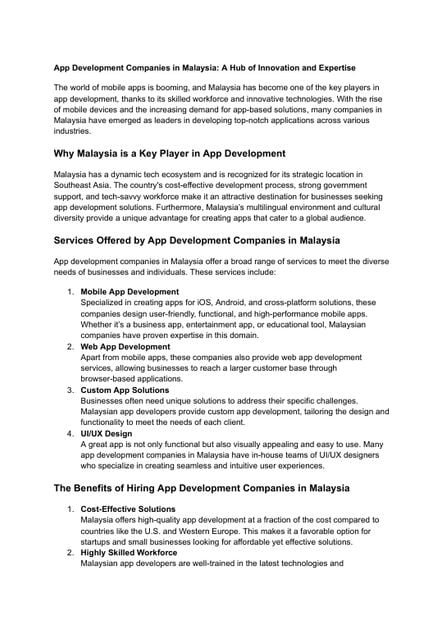Suggest an improvement
-
N/AFix spelling/grammar issueAdd or fix a linkAdd or fix an imageAdd more detailImprove the quality of the writingFix a factual error
-
You don’t need to tell us which article this feedback relates to, as we automatically capture that information for you.
-
This allows us to get in touch for more details if required.
-
Enter a five letter word in lowercase
#gform_wrapper_38 .gform_footer { visibility: hidden; position: absolute; left: -100vw; }
-
This field is for validation purposes and should be left unchanged.

/* = 0;if(!is_postback){return;}var form_content = jQuery(this).contents().find(‘#gform_wrapper_38’);var is_confirmation = jQuery(this).contents().find(‘#gform_confirmation_wrapper_38’).length > 0;var is_redirect = contents.indexOf(‘gformRedirect(){‘) >= 0;var is_form = form_content.length > 0 && ! is_redirect && ! is_confirmation;var mt = parseInt(jQuery(‘html’).css(‘margin-top’), 10) + parseInt(jQuery(‘body’).css(‘margin-top’), 10) + 100;if(is_form){jQuery(‘#gform_wrapper_38’).html(form_content.html());if(form_content.hasClass(‘gform_validation_error’)){jQuery(‘#gform_wrapper_38’).addClass(‘gform_validation_error’);} else {jQuery(‘#gform_wrapper_38’).removeClass(‘gform_validation_error’);}setTimeout( function() { /* delay the scroll by 50 milliseconds to fix a bug in chrome */ jQuery(document).scrollTop(jQuery(‘#gform_wrapper_38’).offset().top – mt); }, 50 );if(window[‘gformInitDatepicker’]) {gformInitDatepicker();}if(window[‘gformInitPriceFields’]) {gformInitPriceFields();}var current_page = jQuery(‘#gform_source_page_number_38’).val();gformInitSpinner( 38, ‘https://geekymedics.com/wp-content/plugins/gravityforms/images/spinner.svg’, true );jQuery(document).trigger(‘gform_page_loaded’, [38, current_page]);window[‘gf_submitting_38’] = false;}else if(!is_redirect){var confirmation_content = jQuery(this).contents().find(‘.GF_AJAX_POSTBACK’).html();if(!confirmation_content){confirmation_content = contents;}jQuery(‘#gform_wrapper_38’).replaceWith(confirmation_content);jQuery(document).scrollTop(jQuery(‘#gf_38’).offset().top – mt);jQuery(document).trigger(‘gform_confirmation_loaded’, [38]);window[‘gf_submitting_38’] = false;wp.a11y.speak(jQuery(‘#gform_confirmation_message_38’).text());}else{jQuery(‘#gform_38’).append(contents);if(window[‘gformRedirect’]) {gformRedirect();}}jQuery(document).trigger(“gform_pre_post_render”, [{ formId: “38”, currentPage: “current_page”, abort: function() { this.preventDefault(); } }]); if (event && event.defaultPrevented) { return; } const gformWrapperDiv = document.getElementById( “gform_wrapper_38” ); if ( gformWrapperDiv ) { const visibilitySpan = document.createElement( “span” ); visibilitySpan.id = “gform_visibility_test_38”; gformWrapperDiv.insertAdjacentElement( “afterend”, visibilitySpan ); } const visibilityTestDiv = document.getElementById( “gform_visibility_test_38” ); let postRenderFired = false; function triggerPostRender() { if ( postRenderFired ) { return; } postRenderFired = true; jQuery( document ).trigger( ‘gform_post_render’, [38, current_page] ); gform.utils.trigger( { event: ‘gform/postRender’, native: false, data: { formId: 38, currentPage: current_page } } ); gform.utils.trigger( { event: ‘gform/post_render’, native: false, data: { formId: 38, currentPage: current_page } } ); if ( visibilityTestDiv ) { visibilityTestDiv.parentNode.removeChild( visibilityTestDiv ); } } function debounce( func, wait, immediate ) { var timeout; return function() { var context = this, args = arguments; var later = function() { timeout = null; if ( !immediate ) func.apply( context, args ); }; var callNow = immediate && !timeout; clearTimeout( timeout ); timeout = setTimeout( later, wait ); if ( callNow ) func.apply( context, args ); }; } const debouncedTriggerPostRender = debounce( function() { triggerPostRender(); }, 200 ); if ( visibilityTestDiv && visibilityTestDiv.offsetParent === null ) { const observer = new MutationObserver( ( mutations ) => { mutations.forEach( ( mutation ) => { if ( mutation.type === ‘attributes’ && visibilityTestDiv.offsetParent !== null ) { debouncedTriggerPostRender(); observer.disconnect(); } }); }); observer.observe( document.body, { attributes: true, childList: false, subtree: true, attributeFilter: [ ‘style’, ‘class’ ], }); } else { triggerPostRender(); } } );} );
/* ]]> */

Key points
- Phaeochromocytoma: rare neuroendocrine tumour of adrenal medulla; secretes excess catecholamines (adrenaline, noradrenaline).
- Incidence: <0.2% of hypertensive patients; 2-8 cases per million per year; 10% metastatic.
- Aetiology: arises from chromaffin cells; 60% sporadic, 40% genetic (MEN2, VHL, NF1, SDHx mutations).
- Clinical features: episodic headache, sweating, palpitations; other symptoms include tremor, pallor, nausea, polyuria.
- Investigations: plasma-free metanephrines (most sensitive), 24hr urine metanephrines, CT/MRI abdomen, MIBG/PET scan if uncertain.
- Medical management: alpha-blockers (phenoxybenzamine, doxazosin) before beta-blockers to prevent hypertensive crisis.
- Surgical management: adrenalectomy after adequate blockade; high-sodium diet, IV 0.9% sodium chloride pre-op to expand volume.
- Complications: acute coronary syndrome, cardiomyopathy, stroke, renal failure, hypertensive encephalopathy.
- Surveillance: annual biochemical and clinical assessment; imaging only if recurrence suspected.
Introduction
Phaeochromocytomas are rare neuroendocrine tumours arising from the adrenal medulla, the innermost layer of the adrenal gland.1 Most of these tumours are benign, with approximately 10% metastatic.2-3 These tumours secrete excessive catecholamines, such as adrenaline and noradrenaline, which are hormones released by the sympathetic nervous system.1
Phaeochromocytomas occur in less than 0.2% of patients with hypertension, with an estimated incidence of 2-8 cases per million per year, although the incidence increases in those with a genetic association.3-4
Aetiology
Phaeochromocytomas arise from chromaffin cells of the adrenal medulla.1 These cells produce catecholamines, including adrenaline and noradrenaline. Phaeochromocytomas are sporadic in 60% of cases, but in the remaining 40% of cases they are associated with genetic syndromes.1, 3
Genetic syndromes associated with phaeochromocytoma include:5-6
- Multiple endocrine neoplasia type 2 (MEN2) with up to 60% incidence
- Von Hippel-Lindau (VHL) syndrome with a 15-20% incidence
- Neurofibromatosis type 1 (NF1) with a 5-8% incidence
- Familial paraganglioma-phaeochromocytoma (SDHx-related)
These disorders share an autosomal dominant inheritance pattern (except rare SDHD mutations).3
Whilst the vast majority of these catecholamine-secreting tumours are located in the abdomen and, more specifically, intra-adrenal (85-90%), the remaining 10-15% of extra-adrenal tumours are referred to as paragangliomas (arising from sympathetic/parasympathetic paraganglia).3
Clinical features
History
The classic triad is described as episodic headache, sweating, and palpitations, but most patients will not present with this cluster of symptoms.3
Approximately half of all patients will be symptomatic, with symptoms usually occurring episodically. Other typical symptoms of phaeochromocytoma include:1-4
- Tremor
- Generalised weakness
- Impending sense of doom
- Pallor
- Nausea
- Visual blurring
- Polyuria
- Polydipsia
It is also important to determine if there is a personal or family history of any genetic syndromes associated with phaeochromocytoma.
Clinical examination
Clinical examination should focus on a thorough assessment of end-organ complications of hypertension. Hypertension is usually paroxysmal, and approximately 5 to 15% of patients are normotensive.3
Typical clinical findings of phaeochromocytoma include:3
- Hypertension
- Orthostatic hypotension
- Evidence of hypertensive retinopathy on fundoscopy
- Displaced and/or forceful apex beat, suggesting hypertensive cardiomyopathy
Patients may demonstrate café-au-lait macules or axillary freckling, which should raise the possibility of NF1 as the underlying genetic aetiology.7


Differential diagnoses
Differential diagnoses to consider in phaeochromocytoma include:8
- Hyperthyroidism
- Anxiety
- Migraine disorder
- Primary hyperaldosteronism (Conn’s syndrome)
- Cushing’s syndrome
- Renovascular disease, including renal artery stenosis and fibromuscular dysplasia
- Renal parenchymal disease
- Medications and other substances, e.g. cocaine, methamphetamines, caffeine, decongestants
It is important to also consider additional causes of secondary hypertension.
Investigations
Bedside investigations
Relevant bedside investigations include:
- ECG: detect evidence of end-stage complications of hypertension and exclude alternative causes of palpitations
- Blood glucose level: impaired glycaemic control is a possible complication
- Urinalysis: proteinuria may suggest end-organ dysfunction due to uncontrolled hypertension
Laboratory investigations
Biochemical confirmation of phaeochromocytoma relies on the demonstration of elevated metanephrines (metanephrine, normetanephrine, 3-methoxytyramine), metabolites of catecholamines.3-4 These are measured due to their longer circulating half-life and being secreted by phaeochromocytomas to much greater degrees.
Relevant laboratory investigations include:3-4
- Plasma-free metanephrines: preferred to urinary metanephrines, especially for those with genetic syndromes or high suspicion of phaeochromocytoma, due to their higher sensitivity
- 24-hour urine fractionated metanephrines: reasonable as first-line to exclude a catecholamine-secreting tumour
Imaging
Imaging should only be pursued once a biochemical diagnosis is confirmed due to the increasing prevalence of adrenal incidentalomas, and includes:3-4
- CT/MRI abdomen and pelvis: characteristic radiographical features may suggest the diagnosis of phaeochromocytoma, including the density and vascularity of the mass. Bilateral tumours are highly suggestive of an underlying genetic cause
- Nuclear medicine imaging (e.g. PET or MIBG scan): if conventional imaging is uncertain, or to exclude metastatic disease if large tumour or paraganglioma (higher risk of multiple tumours and malignancy)
- Echocardiogram: to assess for heart failure secondary to hypertension
Genetic testing
Due to 40% of phaeochromocytomas being associated with an underlying genetic syndrome, all patients diagnosed with this condition should be referred to their local geneticist for genetic counselling, and intra-operative samples should be sent for genetic testing.3-4
Management
Upon diagnosis of phaeochromocytoma, all cases should be referred to the local multidisciplinary team for discussion.4
Medical management
Typical medical management includes:4
- Alpha-blockers (e.g. phenoxybenzamine, doxazosin): should always occur before beta blockade to avoid precipitating a hypertensive crisis through unchecked alpha-mediated vasoconstriction
- Beta-blockers (e.g. propranolol, metoprolol): once adequate alpha blockade has occurred
Patients should avoid agents which may precipitate a hypertensive crisis, including beta-blockade without alpha blockade, glucagon, histamine, metoclopramide, and high-dose glucocorticoids.9
Surgical management
Adrenalectomy should be undertaken after medical optimisation, if clinically appropriate.4
Pre-operatively, evidence of adequate alpha-blockade includes orthostatic hypotension, and adequate beta-blockade includes a resting heart rate between 60 and 70 beats per minute.4
Patients should consume a high-sodium diet and keep well-hydrated. Intravenous 0.9% sodium chloride should be used for volume expansion in the acute and peri-operative periods, as those with chronic catecholamine excess develop reduced intravascular volume as a compensatory mechanism.4
Post-operatively, patients are at risk of hypotension and hypoglycaemia.4 Normotension is typically achieved in one-third of patients, although most patients will achieve a reduction in blood pressure.10
Surveillance
Patients should undergo post-operative and annual clinical assessment and biochemical surveillance, with imaging only repeated if there is a clinical and/or biochemical suggestion of recurrence.4
Metastatic disease
For the 10% who are diagnosed with metastatic disease, this is usually detected during surveillance.11 The median diagnosis for metastatic disease is 5.5 years from initial diagnosis, but there are reports of metastases being diagnosed after 50 or more years.11
There is no cure for metastatic disease, with treatment focusing on prolonging overall survival, maintaining quality of life, and addressing symptoms of catecholamine excess.11
Surgical resection of metastatic disease is preferred after medical optimisation and resection of the primary tumour.11 Treatment of non-resectable metastases depends on the extent of the disease (limited versus diffuse) and the presence of symptoms, in conjunction with patient and tumour factors.11
Additional non-surgical management techniques include surveillance, radiotherapy, percutaneous thermal ablation, chemotherapy, tyrosine kinase inhibitors (e.g. sunitinib), radionuclide therapy and/or somatostatin analogues (e.g. octreotide or lanreotide). Survival at five years is approximately 50 percent.11
Complications
Phaeochromocytomas may result in any of the following complications as a result of uncontrolled hypertension:12-13
- Acute coronary syndrome
- Cardiomyopathy
- Arrhythmia
- Myocarditis
- Pulmonary oedema
- Acute respiratory distress syndrome
- Renal infarction and/or failure
- Hypertensive retinopathy
- Hypertensive encephalopathy
- Stroke
- Seizures
- Pancreatitis
- Ischaemic enterocolitis
Reviewer
Dr Jack Lockett
Consultant Endocrinologist
Editor
Dr Jamie Scriven
References
- BMJ Best Practice. Phaeochromocytoma. 2024. Available from: [LINK].
- NHS. Phaeochromocytoma. 2024. Available from: [LINK].
- Young WF. Clinical presentation and diagnosis of phaeochromocytomas. UpToDate. 2024. Available from: [LINK].
- Bradley K. Clinical Guideline PHAEOCHROMOCYTOMA – DIAGNOSIS AND MANAGEMENT. University Hospital Bristol NHS Foundation Trust. Available from: [LINK].
- Amodru V, Taieb D, Guerin C, et al. MEN2-related phaeochromocytomas: current state of knowledge, specific characteristics in MEN2B, and perspectives. Endocrine. 2020. Available from: [LINK].
- Nölting S, Bechmann N, Taieb D, et al. Personalized Management of Pheochromocytoma and Paraganglioma. Endocrine Reviews. 2022. Available from: [LINK].
- Young WF. Phaeochromocytoma in genetic disorders. UpToDate. 2024. Available from: [LINK].
- Adaway J. Biochemical investigation of secondary hypertension. Manchester University NHS Foundation Trust. 2023. Available from: [LINK].
- Young WF, Kebebew E. Treatment of phaeochromocytomas in adults. UpToDate. 2024. Available from: [LINK].
- Patel D, Phay JE, Yen TWF, et al. Update on Pheochromocytoma and Paraganglioma from the SSO Endocrine and Head and Neck Disease Site Working Group, Part 2 of 2: Perioperative Management and Outcomes of Pheochromocytoma and Paraganglioma. Annals of Surgical Oncology. 2020. Available from: [LINK].
- Young WF. Management of malignant (metastatic) paraganglioma and pheochromocytoma. UpToDate. 2024. Available from: [LINK].
- Y-Hassan S, Falhammar H. Cardiovascular Manifestations and Complications of Pheochromocytomas and Paragangliomas. Journal of Clinical Medicine. 2020. Available from: [LINK].
- Gupta PK, Marwaha B. Pheochromocytoma. StatPearls. 2024. Available from [LINK].
Image references
- Figure 1. Klaus D. Peter. License: [CC BY 3.0 DE].
Discover more from Bibliobazar Digi Books
Subscribe to get the latest posts sent to your email.




